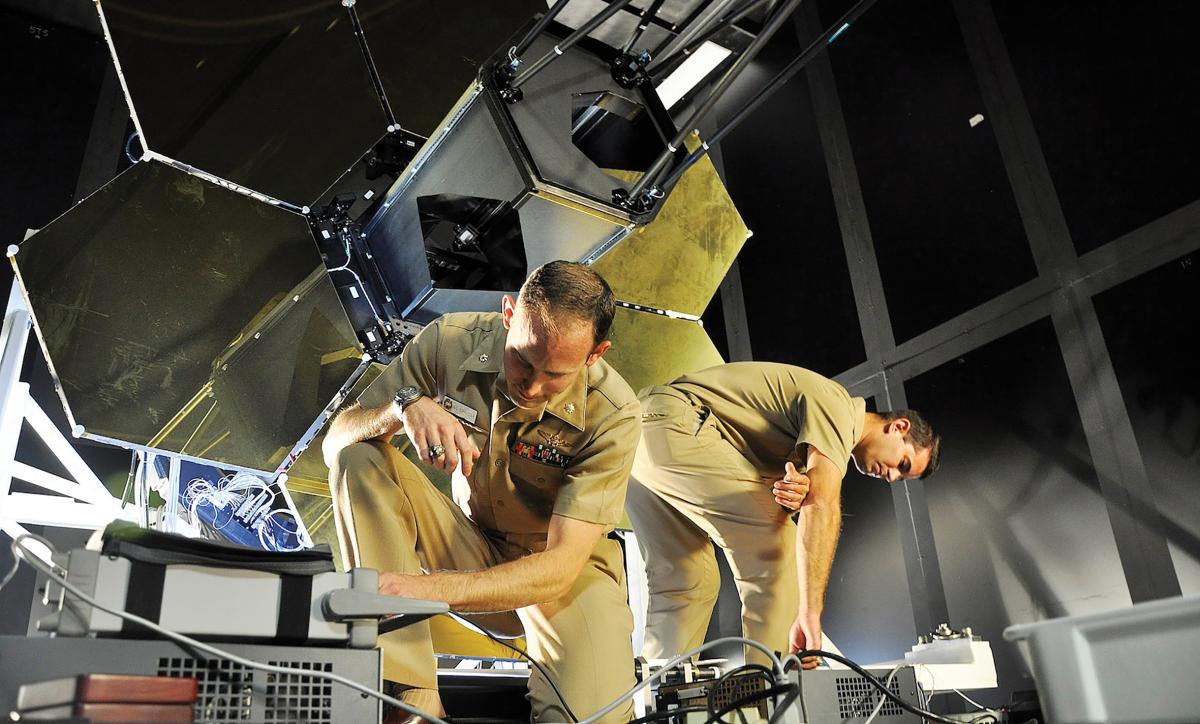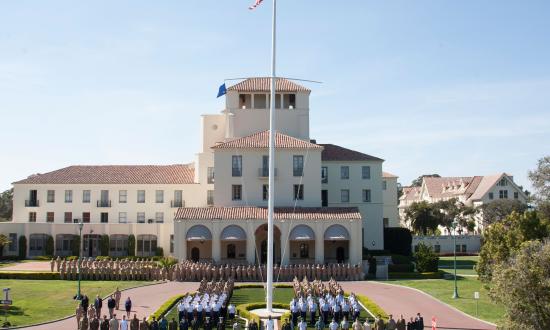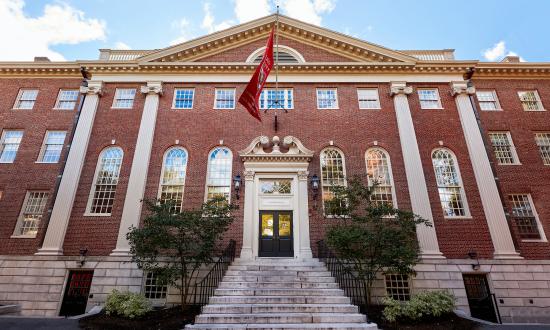The Department of Defense (DoD) is seeking to identify and develop emerging and disruptive technologies to reestablish a technology “offset” from peer and near-peer adversaries such as Russia and China. But the Third Offset will not result solely from identifying and choosing a few or even several revolutionary or disruptive technologies. Tech is too unpredictable and subject to theft, obsolescence, and mitigation.
While the military must continue investing in technological development, establishing and sustaining the next offset will require broad-based, rigorous, ongoing education. Education will enable Navy acquirers, maintainers, and operators to more effectively employ the tech they have and to recognize the disruptive technologies that emerge.
Committing to Educate
The offset the nation enjoyed during the Cold War was earned through a sustained focus on the development of both personnel and technology. The Navy’s investment in its officers through graduate education at the Naval Postgraduate School (NPS), however, has declined—from an average of 1.7 percent of the commissioned force from 1975 to 1990 to 1.1 percent from 2015 to 2018.1 This decrease of nearly 450 students per year has not been substantially offset by new graduate education opportunities.
Having fewer enrolled students limits the idea exchange that happens between students, as well as between teachers and students. In cyber courses, for example, students coming from tours with cyber mission teams provide critical operational insight to flesh out theory and examples in a field that changes weekly or monthly. Instructors roll this insight into the next course offering (and related courses), constantly improving the utility to students.
Student-to-student interactions provide critical context to junior warfighters who may have fleet experience on only a single platform, mission, or target set. This context from students with different experience and perspectives produces better researchers, as well as better operators when students return to the fleet with tactics, techniques, and procedures proven effective in other arenas.
Students are a force multiplier for research faculty, providing intellectual horsepower. More students simply produce more research in a given period and minimize corporate knowledge loss through hot hand-offs of ongoing projects to new students.
To harvest these education and research benefits, the Navy must commit to sending more students to graduate education and expanding options that reduce the impact to operational manning. There always will be a tug-of-war between operational requirements and training, but internal development is the only way to build a technically competent force.
Approximately five years ago, the Marine Corps significantly increased the number of Marines in residence and technical programs at NPS, and Navy communities with reputations for technical excellence have committed to graduate education as well. The engineering duty officer community has implemented a 100 percent graduate education requirement, and the information warfare and other restricted line communities have made a similar commitment to developing educated warriors.
Simply committing to more officer graduate education, however, is not enough. Like the Marine Corps, the Navy must commit to educating its enlisted personnel as well as its officers and commit to organizational changes that recognize that warfighting effectiveness in the information age is achieved through education.
Both the Navy and its personnel will benefit from increased exposure to education opportunities at all levels through the Naval Education Enterprise (NEE) and forthcoming Navy Community College (NCC). The NCC concept is a great opportunity to keep high-performing individuals, while permitting the service to shape educational offerings in ways that benefit the Navy and DoD. It is vital that the NCC is resourced to provide high-quality offerings.
To enable educational progression throughout a career, the NCC could emphasize dual-use curricula of interest to both the Navy and industry. NCC curricula could align with the other elements of the NEE to ensure undergraduate degrees meet prerequisites for life-cycle educational offerings from other institutions, providing a more certain path to graduate education.
Maximizing Navy Research
Enhancing graduate education opportunities within the NEE lifelines can provide additional value, frequently at a lower cost, by educating students in a DoD-centric context. This has the added benefit of collocating students on a quest to solve a problem with researchers who have years of perspective and experience examining DoD problem sets.
Student theses and capstone projects are a powerful capability developer for the force. Student warfighters know what is lacking in the technologies, systems, or processes from direct experience. Graduate education gives them an opportunity to ground their operational experience in theoretical context and time to develop solutions to these capability gaps. When leveraged with payback tours, the NEE increases its contribution to the Third Offset by returning graduates to positions where they can implement their solutions.
The productivity of research within the NEE could be further increased by tighter coupling of Navy capability gaps with NEE researchers and students. For example, most sailors and Marines would seize the opportunity to analyze their field equipment for cyber vulnerabilities. This type of targeted research can provide immediate, useful feedback to a sponsor, as well as a motivating research project for both the student and research advisor. The NPS Center for Cyber Warfare has been developing this coupling between Navy and Marine organizations such as the Fleet Cyber Command and Marine Corps Forces Cyberspace Command, but many more opportunities exist. Expanding existing fleet-centric programs such as the Naval Research Program could provide more bandwidth to address fleet needs.2
Finally, senior community leaders (e.g., “warfare chairs” and senior service representatives at NEE institutions) can advocate for curricula and research targeted to Navy needs. If resourced with sustained funding (similar to a program manager at any Navy or DoD research lab), they would have the means to effect long-term research programs targeted at specific offset elements.
Overhauling Programs
Because operational manning requirements prevent doubling the number of in-residence graduate education students in the near term, the NEE needs to provide options that offer as many of the benefits of resident education as possible (e.g., prolonged in-person interaction with expert instructors and classmates to build knowledge context, exchange ideas, provide research feedback, etc.).
As an alternative to traditional distance learning, higher education has developed “near-resident” curricula in recent years. Many of these programs require monthly presence on campus for only a day to a few days, with online or distance education filling the remainder of the learning period. Many existing in-resident NEE curricula could be adapted to this model, and many NPS curricula already have experience with alternative models, from fly-away in-residence instruction at non-NPS sites to courses with in-residence weeks at the start and end of a quarter. Adjustments at NPS in response to COVID-19 have further enhanced available alternatives.
In addition, the NEE must closely examine what it delivers, along with when and why. Identifying and planning for life-cycle education will be key to enabling a new education paradigm. Just as the warfighting effectiveness of a platform is degraded by age and technological advances, so is the effectiveness of an education. This can be mitigated by more tightly linking educational goals to fundamental concepts that support warfighting excellence, but knowledge must be refreshed by life-cycle education.
The final vector for reestablishing an offset is adapting the personnel and promotion system to provide opportunities and benefits for graduate education. Too frequently, in-residence education is at best viewed as career neutral in the Navy. Detailers and mentors often warn officers that an educational tour may affect their ability to screen for the next promotion because of delays in milestone tours, etc. This mentality produces suboptimal Navy-wide outcomes. Why would a high-performing employee want to work for an organization that seeks less educated workers?
Life-Cycle Education
Specific technologies are not the sole source or even foundation of an offset. They are enablers that must be developed, integrated, and applied with plans and tactics by warfighters with the critical thinking skills, technical acumen, and operational context to recognize and account for the capabilities, interdependencies, and vulnerabilities they present.
These warfighters should be developed internally through a comprehensive life-cycle education system that shows the Navy values knowledge and is committed to long-term workforce development.
1. “Fact Books,” Naval Postgraduate School.
2. “Naval Research Program Portal,” Naval Research Program.





